A 3D "digital twin" of the RMS Titanic is revealing surprising new details about how the ship sank and the fate of its passengers and crew.
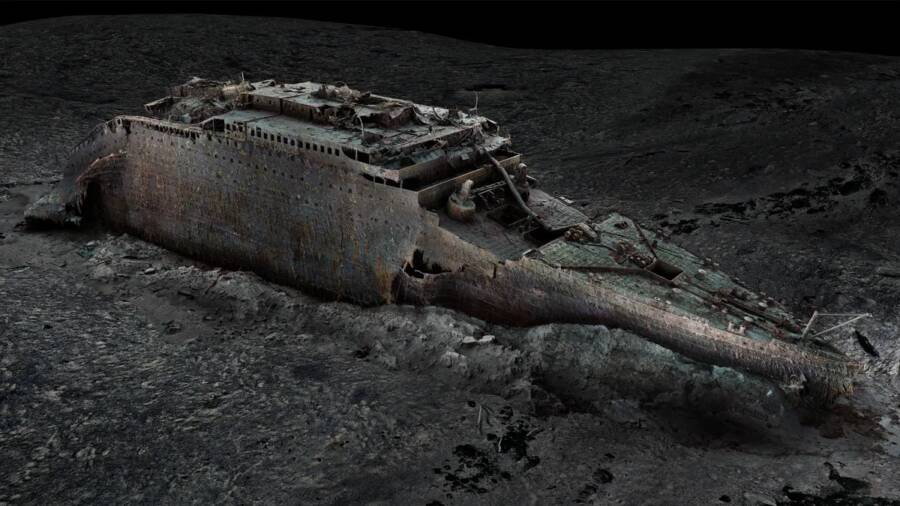
Atlantic Productions/MagellanThe highly-detailed scan comprises more than 700,000 images captured by robotic camera drones in 2022.
Using the most detailed digital model of the ill-fated Titanic to date, researchers were able to reconstruct the ship’s final hours, confirming eyewitness accounts that engineers worked until the very end to keep the lights on.
Using underwater robots that traveled nearly 13,000 feet down to the floor of the Atlantic Ocean, more than 700,000 high-quality images of the wreckage were collected and combined to create a “digital twin” of the lost ship. Through this digital recreation, researchers were able to study the wreckage in greater detail, painting a more complete picture of the final hours of the Titanic.
The scan was produced for a new National Geographic and Atlantic Productions documentary titled Titanic: The Digital Resurrection, similar to another documentary produced last year that digitally recreated the wreckage of the Endurance.
High Resolution Scans Created An Exact 3D Replica Of The ‘Titanic’
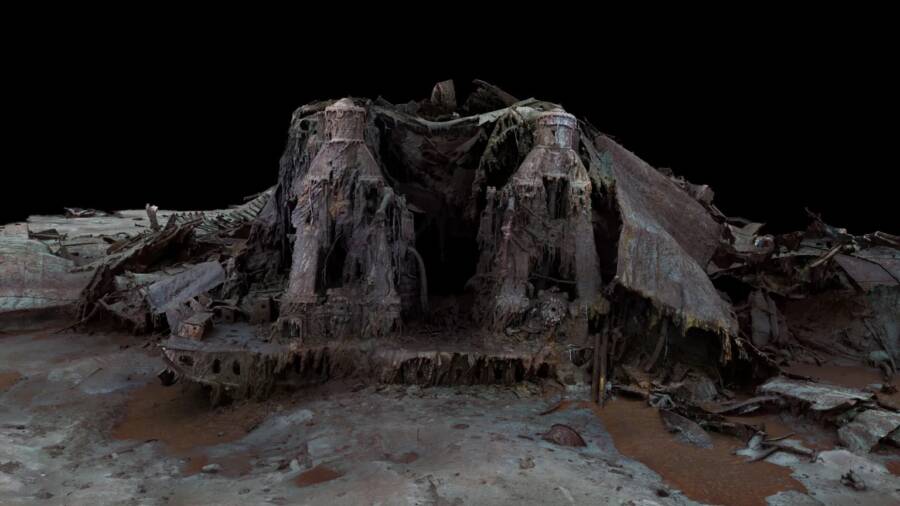
Atlantic Productions/MagellanThe remainder of the stern of the Titanic, which was torn to shreds as it sank.
According to a report from National Geographic, the scan of the Titanic took place over the course of three weeks back in 2022, with Titanic historian Parks Stephenson overseeing much of the project.
Stephenson had been to see the Titanic wreck twice in person since 2005, but he likened the viewing experience to “being in a dark room” with “a flashlight that’s not very powerful.” In other words, although he technically saw the ship, he didn’t get a very good view of it.
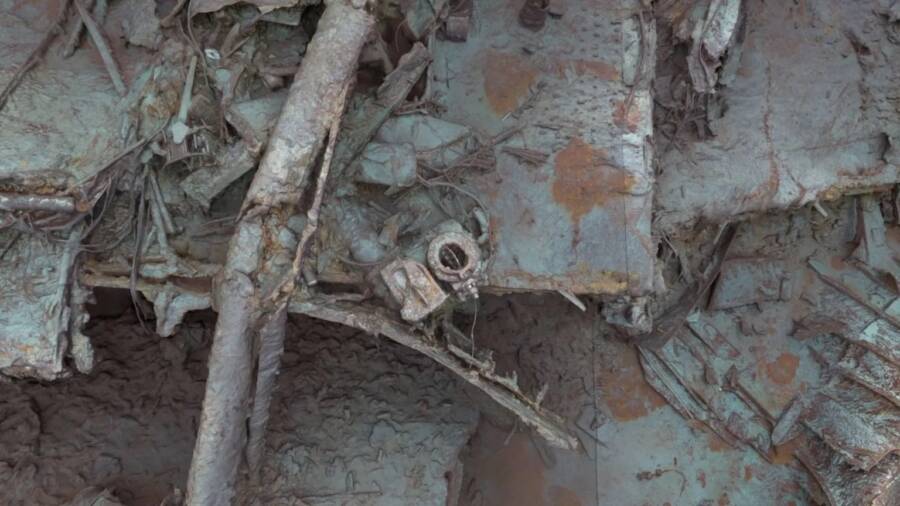
Atlantic Productions/MagellanAn open steam valve corroborates eyewitness reports that the ship’s engineers kept working to keep the lights on until the very end.
However, thanks to these scans, Stephenson was able to examine the Titanic in far greater detail. The 3D replica revealed what the dark depths of the ocean and the human eye simply could not: the ship’s hull, still largely intact and wedged into the seafloor. While researchers knew this was the case, the detailed model makes it clearer how, exactly, it might have happened.
Stephenson said, based on his observations, that the back half of the ship could very likely have spiraled as it sank and broke apart into rubble. The incredible precision of the scan — a one-to-one model — enables researchers like Stephenson to see exactly how the ship’s wreckage is laid out.
“As soon as I saw the Titanic digital twin images, I could tell,” Stephenson said. “Number one, I’d never seen the Titanic like this before. And number two, it felt right.”
New Details From A ‘Digital Twin’ Of The ‘Titanic’
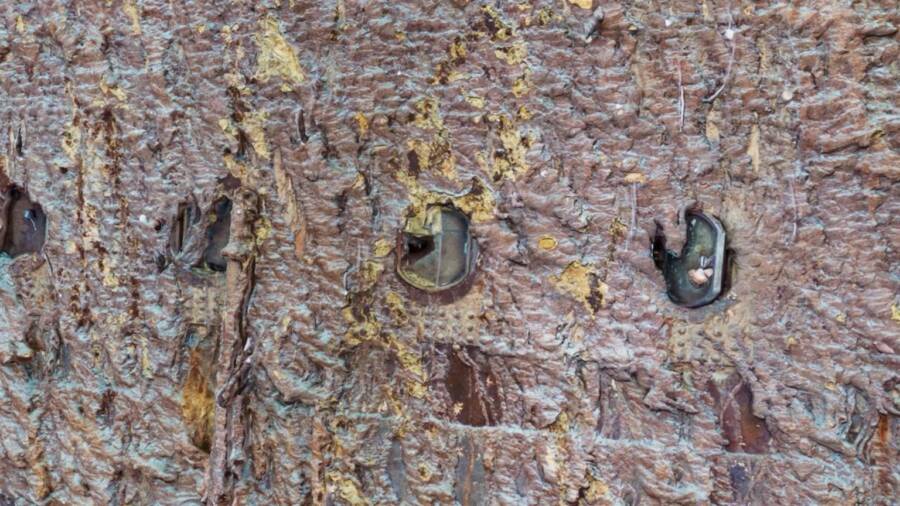
Atlantic Productions/MagellanThe broken glass of a porthole.
In a press release, National Geographic highlighted just a few of the remarkable details seen in the scans. These included a visible open steam valve, which corroborates eyewitness accounts that the ship’s engineers remained at their posts in the boiler room for more than two hours after impact to keep the electricity on.
Hull fragments scattered across the wreck site, meanwhile, further support that the Titanic did not split cleanly in two but was ripped apart at the stern, which would have cut through first-class cabins where prominent passengers may have attempted to take refuge.
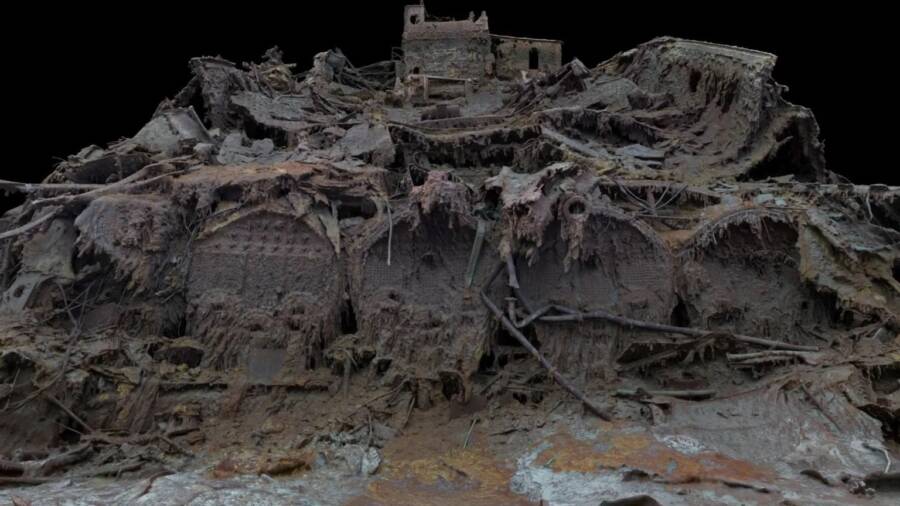
Atlantic Productions/MagellanA boiler room at the back of the bow.
Perhaps the most remarkable revelation, however, is evidence that directly exonerates First Officer William Murdoch, who had long been accused of abandoning the ship. Second Officer Charles Lightoller had testified that Murdoch was swept away by the sea, and now a high-resolution detail of a lifeboat davit suggests that Murdoch’s crew was preparing a launch just moments before the starboard side of the Titanic was engulfed by water, meaning he had indeed remained at his post.
The team also investigated hundreds of relics that have been scattered across the seafloor, including things like pocket watches, purses, gold coins, hair combs, shoes, and a shark’s tooth charm. Many of these items were even connected back to their original owners, thanks to historian Yasmin Khan.
What’s more, the scans revealed that the Titanic is rapidly deteriorating, with parts of the ship’s most iconic areas already collapsing. It’s believed that the vessel could disappear completely within the next 40 years.
Thankfully, the scans faithfully recreated how the ship looked back in 2022, so even as more pieces are lost to time, experts will still have a way to analyze the historic wreckage.
After this new look at the Titanic through 3D scans, see our gallery of 55 striking colorized photos taken aboard the ship. Then, read the remarkable stories of 12 of the disaster’s survivors.





